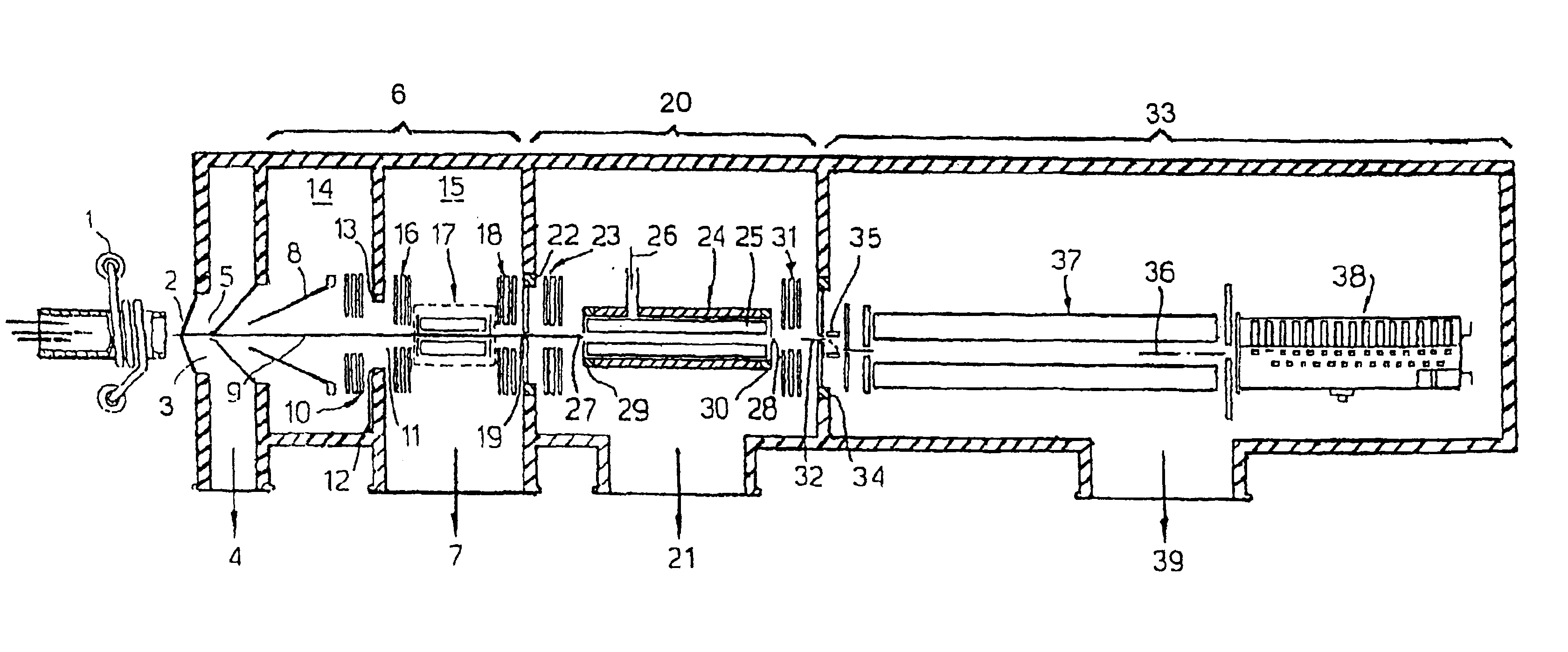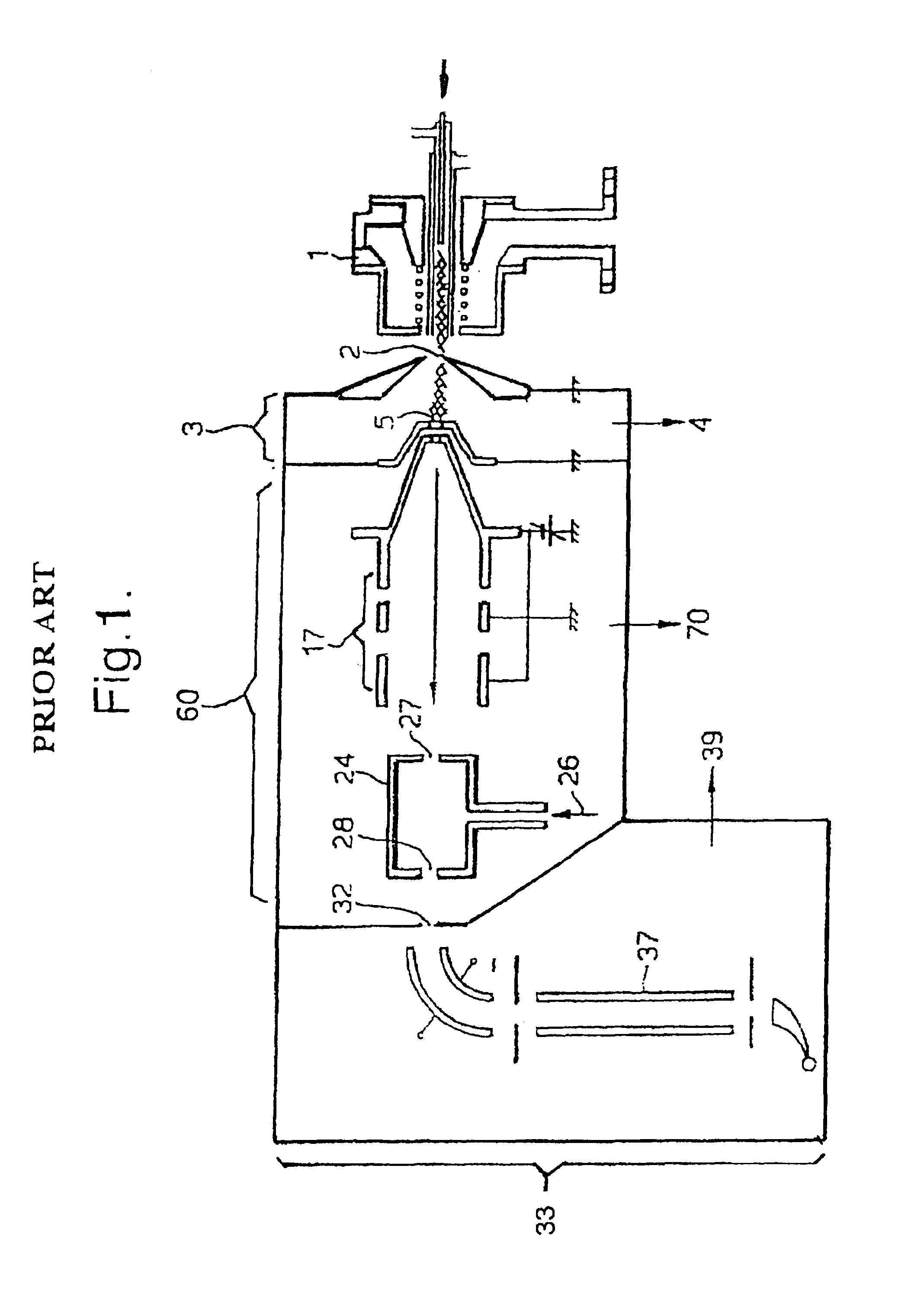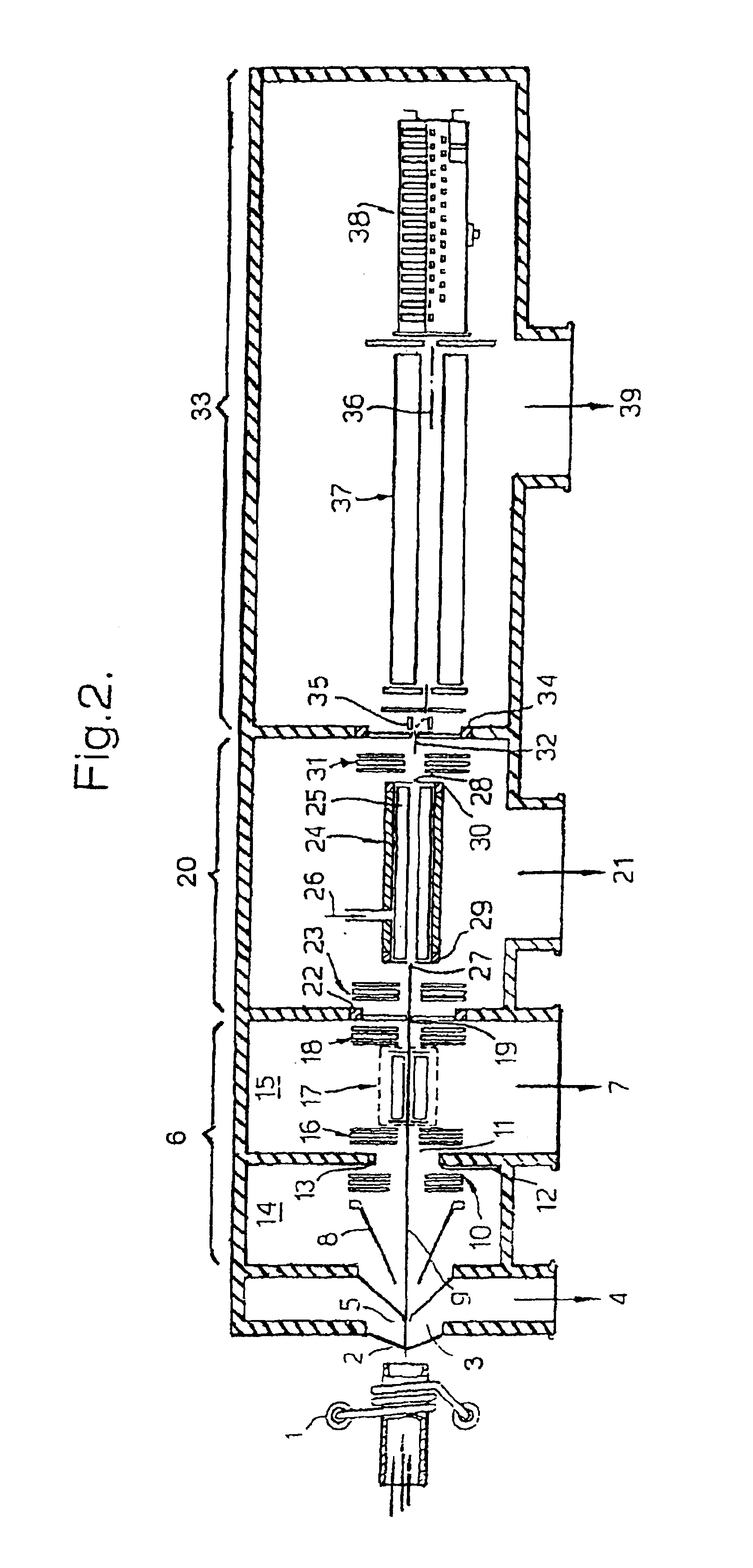Means for removing unwanted ions from an ion transport system and mass spectrometer
a mass spectrometer and ion transport technology, applied in the field of inductively coupled plasma mass spectrometry, can solve the problems of affecting the detection of some elements, affecting the operation of instruments, and attenuating the ion beam, so as to reduce the unresolved baseline noise signal, facilitate access, and facilitate replacement or re-usability.
- Summary
- Abstract
- Description
- Claims
- Application Information
AI Technical Summary
Benefits of technology
Problems solved by technology
Method used
Image
Examples
Embodiment Construction
[0036]In the prior art mass spectrometer of FIG. 1, the inductively-coupled plasma (ICP) ion source 1 is of conventional design, operating at atmospheric pressure. Ions are generated in the plasma and entrained in the general gas flow, part of which passes through a sampling aperture 2. The expansion chamber 3, is located behind the sampling aperture 2 and is evacuated by means of a rotary-vane vacuum pump at 4. The gas flow that passes through the first aperture 2 expands as a super-sonic free jet, the central portion of which passes through the second aperture 5 into an evacuated chamber 60. Aperture 5 is in the form of a skimmer, for example such as described in U.S. Pat. No. 5,051,584. Located in the evacuated chamber 60 is an ion optical device 17, in this case a lens stack, and a collision cell 24 having an entrance aperture 27 and an exit aperture 28. The collision cell 24 is a simple passive collision cell ie a chamber pressurised with target gas 26. On exiting the collision...
PUM
| Property | Measurement | Unit |
|---|---|---|
| distance | aaaaa | aaaaa |
| temperatures | aaaaa | aaaaa |
| partial pressure | aaaaa | aaaaa |
Abstract
Description
Claims
Application Information
 Login to View More
Login to View More - R&D
- Intellectual Property
- Life Sciences
- Materials
- Tech Scout
- Unparalleled Data Quality
- Higher Quality Content
- 60% Fewer Hallucinations
Browse by: Latest US Patents, China's latest patents, Technical Efficacy Thesaurus, Application Domain, Technology Topic, Popular Technical Reports.
© 2025 PatSnap. All rights reserved.Legal|Privacy policy|Modern Slavery Act Transparency Statement|Sitemap|About US| Contact US: help@patsnap.com



